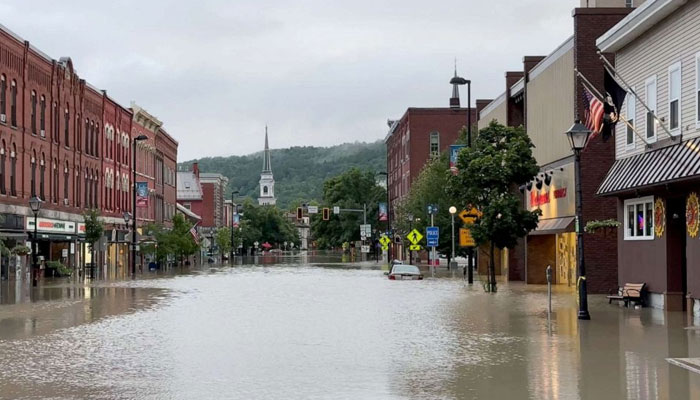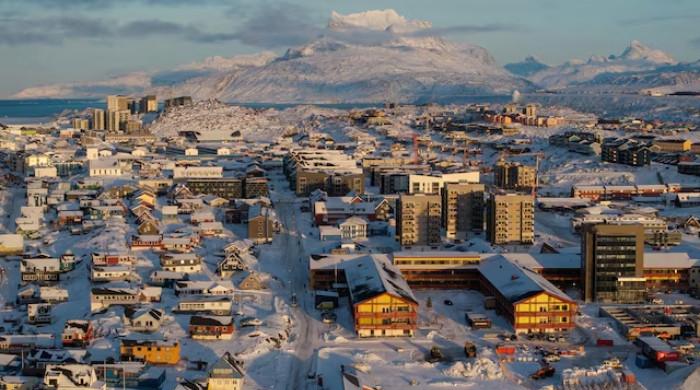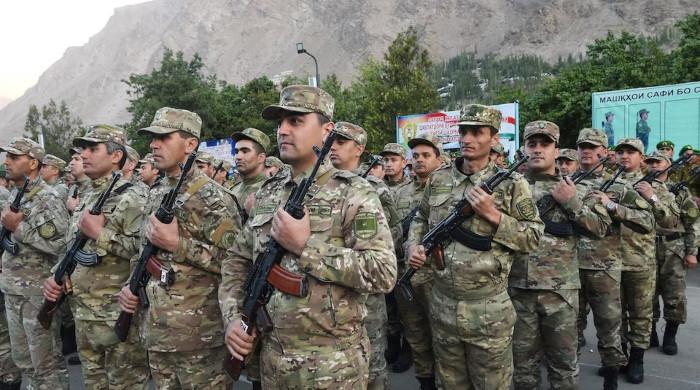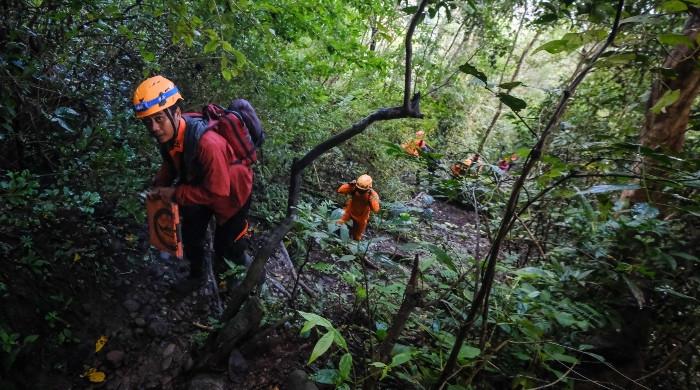Heavy rains trigger rescue operations in flood-hit Vermont
Officials issued warnings about Wrightsville Dam nearing capacity, posing unprecedented threat to nearby North Branch River
July 12, 2023

Vermont, a northeastern state in the United States, has been plunged into chaos as catastrophic floods wreak havoc across the region. President Joe Biden declared a state of emergency as heavy rains pounded the state, resulting in widespread flooding and the urgent rescue of dozens of residents by boat.
The gravity of the situation escalated when officials issued warnings about the Wrightsville Dam nearing capacity, posing an unprecedented threat to the nearby North Branch River. The deluge has inundated downtown Montpelier, the state capital, and left roads impassable in various parts of Vermont.
"This has never happened since the dam was built, so there is no precedent for potential damage," expressed Montpelier city manager William Fraser, underscoring the severity of the unfolding crisis.
Amidst the chaos, authorities have been working tirelessly to save lives and provide aid to affected communities. Over 100 people have been rescued from submerged cars and homes, with ongoing efforts to airlift others to safety. Mike Cannon, a member of Vermont's Urban Search and Rescue team, underlined the urgency of the situation, saying, "We are still in a very dangerous part of this disaster. We are performing active rescues as we speak today."
Vermont Governor Phil Scott, drawing parallels to the devastating Tropical Storm Irene in 2011, described the current flooding as "historic and catastrophic."
While the sun briefly emerged on Tuesday afternoon, offering a glimmer of hope, Scott issued a cautionary message: "It's not over. We expect more rain later this week, which will have nowhere to go in the oversaturated ground."
Scientists have attributed the severity of the floods to climate change, as a warmer atmosphere holds more water, intensifying the risk of heavy rainfall. This grim reality serves as a reminder of the urgent need to address climate-related challenges and adopt effective mitigation strategies.
As Vermont continues to grapple with this unprecedented natural disaster, efforts are underway to provide relief and support to affected residents. The state, along with the assistance of federal agencies, is mobilising resources to aid recovery and restore normalcy to the ravaged communities.
The destructive force of the floods has underscored the vulnerability of regions across the United States to climate-induced disasters, calling for enhanced preparedness and resilience in the face of an uncertain future.











